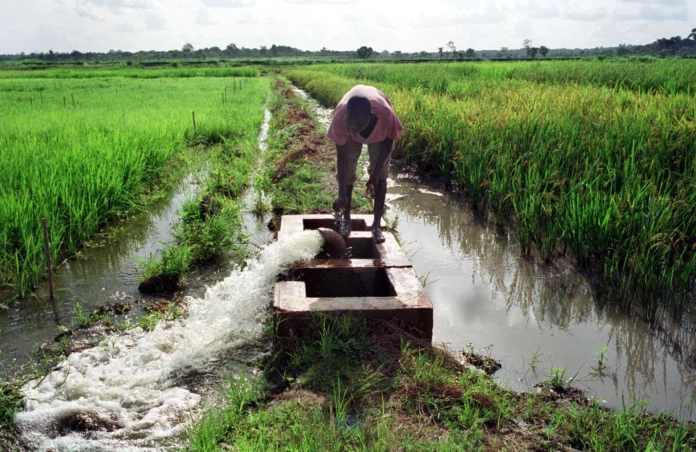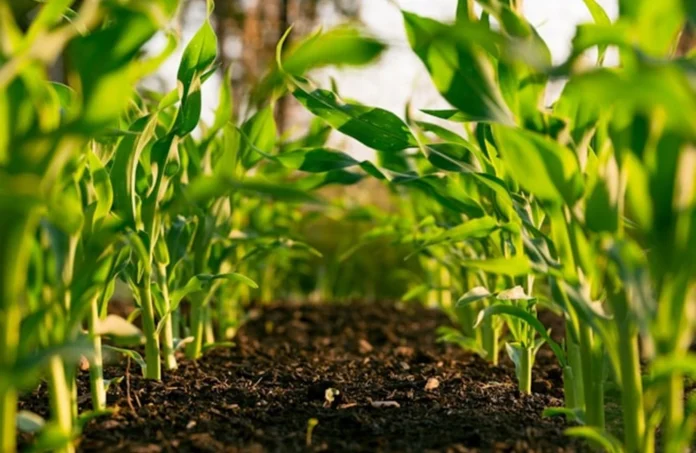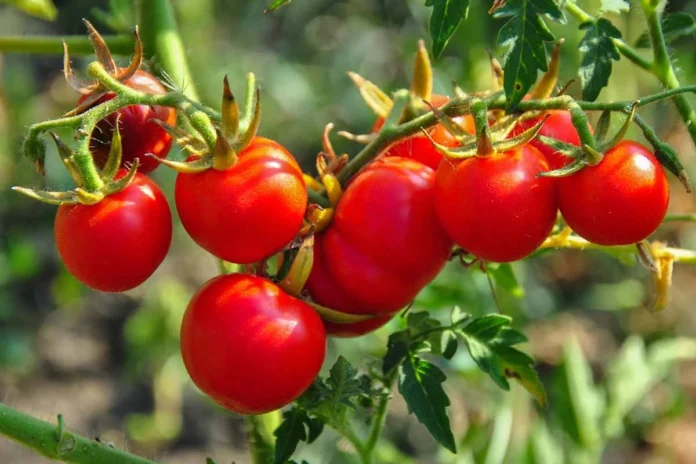Arabfields, Pretoria, South Africa — In a significant development for South Africa’s agricultural landscape, a new trade agreement with China is set to invigorate the nation’s stone fruit industry, providing fresh avenues for growth amid global market pressures. The deal, formalized last week, grants South African producers access to one of the world’s largest consumer markets, potentially injecting hundreds of millions of rand into the economy while bolstering export diversification efforts.
The protocol was signed on October 15, 2025, in Shanghai by South Africa’s Minister of Agriculture, John Steenhuisen, and China’s Minister of the General Administration of Customs, Sun Meijun. This landmark agreement marks the first instance where China has negotiated market entry for multiple fruit varieties from a single country under one comprehensive pact. It encompasses five key types of stone fruit: apricots, peaches, nectarines, plums, and prunes, allowing South African exporters to tap into China’s burgeoning demand for premium fresh produce.
Industry experts project that the agreement could generate approximately R393 million to R400 million in export revenue over the next five years, with potential to double that figure within a decade. Initial estimates suggest earnings of R27 million in 2025, escalating to R53 million by 2026, as shipments ramp up. Beyond direct financial gains, the deal is anticipated to spur job creation, with around 350 new positions in orchards and packhouses, and an additional 600 roles in ancillary sectors such as logistics, packaging, and transportation. These projections underscore the protocol’s role in fostering sustainable growth within South Africa’s deciduous fruit sector.
South Africa’s stone fruit production forms a vital component of its broader horticultural output, which contributes significantly to the national economy. In 2024, the country produced an estimated 182,000 metric tons of peaches and nectarines, alongside 93,000 metric tons of plums, across approximately 18,000 hectares of cultivated land. Overall fruit production reached about 6.23 million metric tons, with exports totaling 3.8 million metric tons to around 90 countries worldwide, positioning South Africa as the 15th-largest fruit producer globally and the second in the Southern Hemisphere after Argentina.
The 2024/2025 export season outlook appears promising, with anticipated increases in volumes for most categories: apricots up 9%, nectarines up 4% (despite an 8% dip in early varieties), and plums surging by 12%, while peaches are expected to decline marginally by 1%. Plum exports, in particular, rebounded strongly in the 2024-2025 season, recording a 22% increase following weather-related disruptions the previous year. Traditionally, these fruits have been directed toward markets in the European Union, the United Kingdom, and the Middle East, but the new Chinese access promises to redistribute volumes and enhance pricing stability.
China’s import market for stone fruit is expansive, with over 21 million cartons of peaches and nectarines and 20 million cartons of plums imported last year, volumes that surpass South Africa’s entire seasonal exports. Conservative forecasts indicate that South African shipments could capture up to 5% of China’s import market by 2032/2033, enabling producers to sell more at sustainable prices and potentially stimulating new investments in orchards.
This stone fruit protocol aligns with South Africa’s longstanding policy of export diversification, aimed at mitigating risks associated with overreliance on a handful of markets. In 2024, the country’s agricultural exports achieved a record high of $13.7 billion (approximately R238 billion), reflecting a 3% year-on-year increase. This growth was driven by strong performances in citrus, grapes, and other horticultural products, despite logistical and environmental challenges.
Regionally, Africa absorbed 44% of these exports, followed by Asia and the Middle East at 21%, the European Union at 19%, the Americas at 6%, and the rest of the world, including the United Kingdom, at 10%. China, already a critical partner, accounts for about 70% of South Africa’s wool exports and holds substantial importance for red meat, though South Africa’s overall share in China’s agricultural imports remains modest at around 0.4%.
Wandile Sihlobo, chief economist at the Agricultural Business Chamber (Agbiz), emphasized the strategic value of expanding ties with China. “We must work to broaden South Africa’s agricultural access to China,” he stated. “However, this current access in China is vital for the wool and red meat industry. The fruit industry must be the next to see broader access.” Sihlobo noted that China ranks among the world’s top agricultural importers, capturing 9% of global imports in 2024, just behind the United States at 10%. He views the deal as an opportunity to further diversify exports, reducing vulnerability to fluctuations in traditional markets.
The timing of the China agreement is particularly fortuitous, coming amid escalating trade tensions with the United States. On August 7, 2025, the US imposed a 30% reciprocal tariff on South African exports, a move announced by President Donald Trump that dismantled benefits under previous arrangements like the African Growth and Opportunity Act (AGOA). This tariff has raised concerns across South Africa’s agricultural sector, with potential losses in high-value markets for fruits, wines, and nuts.
Despite the tariffs, South African farm exports to the US showed resilience in the first half of 2025, surging 19% to $118 million in the first quarter and 26% to $161 million in the second. However, industries like sugar and macadamias have been hit hard, with the latter seeing 31% of its shelled exports directed to the US in 2024. The stone fruit sector, particularly plums, stands to benefit from the pivot to China as a means to offset these disruptions.
Francois Rossouw, CEO of the Southern African Agri Initiative (Saai), hailed the protocol as a “positive and timely development” that could fortify the farming economy. “Access to China’s massive consumer market could help offset some of the losses caused by U.S. tariffs and bring in an estimated R400 million over the next five years,” he said. “It reflects a smart, long-term diversification strategy that we’ve been advocating for, one that reduces our reliance on a few export destinations and strengthens ties with emerging markets in Asia.”
Yet Rossouw urged caution, noting that the Chinese market cannot fully substitute for the US. “The US has historically been a high-value destination for South African premium fruit, wine, and nut exports, supported by long-standing trade relationships, brand trust, and logistical efficiencies,” he explained. “The Chinese market, while vast, comes with its own challenges including longer shipping routes, stricter phytosanitary requirements, and competitive pricing pressures from other exporting countries.” He advocated for a balanced, multi-market approach to ensure the sector’s resilience.
Echoing these sentiments, Minister Steenhuisen described the protocol as “a major breakthrough for South African fruit producers and exporters at a time when diversification is essential for our agricultural resilience.” He highlighted its alignment with strategies to cater to China’s expanding middle class and mitigate tariff impacts.
Jacques du Preez, Hortgro’s general manager for trade and markets, expressed enthusiasm about the culmination of years-long negotiations. “We are ecstatic that we could conclude a process that started many years ago,” he said, crediting collaborative efforts between government and industry stakeholders. Du Preez anticipates building on successful campaigns for apples and pears in China, where South Africa already supplies significant volumes, $19 million in apples and $130 million in citrus in 2024.
Anton Rabe, Hortgro’s executive director, stressed the importance of ongoing market development. “Gaining new markets while maintaining existing ones is a top priority,” he noted, emphasizing partnerships to maximize exports to China.
Challenges in exporting to China include extended shipping times, often 25-30 days, stringent food safety and quarantine protocols, and competition from suppliers like Chile and Australia. Infrastructure constraints in South Africa, such as port inefficiencies, could also hinder scalability. To address these, ongoing discussions aim to implement zero tariffs on South African exports to China, enhancing competitiveness.
The stone fruit deal builds on a decade of strengthening agricultural ties between the BRICS partners. Since a 2015 memorandum on China’s Belt and Road Initiative, South African fruit exports to China have grown at a 12.5% compound annual rate, reaching $490 million in 2024. With protocols already in place for citrus, grapes, apples, pears, and avocados, negotiations for cherries and blueberries are slated to conclude by 2026.
South Africa’s export season, spanning October to March or April, complements China’s off-season, aligning with peak demand during holidays like Chinese New Year. This temporal synergy, combined with improved bilateral systems for food safety and quarantine, positions the partnership for mutual benefit.
As South Africa navigates an evolving global trade environment, this agreement exemplifies proactive diplomacy and economic strategy. By diversifying markets and investing in resilient supply chains, the agricultural sector can safeguard livelihoods and drive inclusive growth, ensuring that opportunities like this translate into tangible prosperity for farmers and communities alike.












